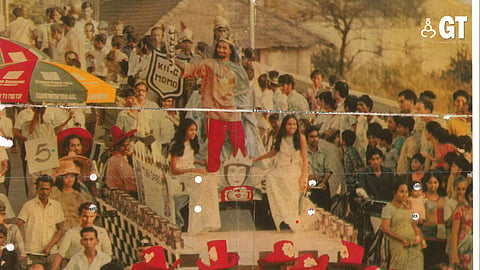

The years immediately following the Liberation saw the Carnival festivities in Goa reduce in intensity. "Carnival was kept alive by the clubs in Panjim and Margao – Clube Nacional and Clube Vasco da Gama in Panjim and Clube Harmonia in Margao," recalls Timoteo Fernandes who, well into his 80s, springs to life as Carnival approaches and his gait turns jaunty again.
A young man in the 1960s, Timoteo was not happy with the Carnival celebrations and began to scout for an idea to bring the festival back to life. It came to him, like most brainwaves do, rather unexpectedly when leafing through a foreign magazine during a visit to the house of the Late Vasco Alvares.
“The magazines had printed pictures and news of the Carnival celebrations in Rio de Janeiro. I liked what I read and saw in the pictures and I thought why not present a King Momo in Goa with a group of revellers?” Timoteo’s eyes still light up as he recollects the old days.
Having an idea is one thing, implementing it is quite another. Timoteo was undaunted and decided that if Goa needed a King Momo and nobody was interested, he would don the crown himself.
I paid the bullock cart owner Rs 5 and I bought cellophane paper worth Re 1, at that time you could get five sheets for that amount, and with that, I decorated the cart
Timoteo Fernandes
And so on Fat Saturday of 1965, Goa’s first Carnival float parade trundled into the city of Panjim. There was no tableau, no loud music, no crowds lining the streets. It was a decorated bullock cart with Timoteo wearing the King Momo crown and about 15 to 20 friends and neighbours accompanying him as they sang and danced their way from Patto to the Garcia da Orta Garden (Municipal Garden) in Panjim.
Until February 1965, Carnival in Goa meant impromptu fancy dress, mock cocotte battles, a ball at the club and just good-natured cheer. And then it changed.
Carnival in Goa had just got a new avatar. It was still fun, but as Timoteo relates, there were some tense moments too. Until February 1965, Carnival in Goa meant impromptu fancy dress, mock cocotte battles, a ball at the club and just good-natured cheer. And then it changed.
The float parade started, powered by bullocks at that time and brass instruments providing the music, but within a decade it would grow to become synonymous with Carnival.
The music drew people to the streets, recalls Timoteo as he dives into the deep recesses of his memory, but it also led to a change in behaviour of the bulls pulling the cart. “Along the way, when we reached the fazenda (accounts department) because of the loud music and the dancing the bulls drawing the cart got agitated. Luckily the owner was able to control them.”
Imagine if you will, but the total expense for that first impromptu King Momo float came to Rs 6. “I paid the bullock cart owner Rs 5 and I bought cellophane paper worth Re 1, at that time you could get five sheets for that amount, and with that, I decorated the cart,” Timoteo smiles as he remembers this.
The musicians and those accompanying him came out of goodwill, in the spirit of Carnival. That spirit is perhaps absent today, but it did continue for a while in the 1960s and Timoteo’s story didn't end there.
The following year, 1966, there was no bullock cart, but there was an open jeep that went around the city. The jeep belonged to the Panjim Municipal Council (now CCP) and the chief officer was Vasco Alvares, another of the icons of the Goa Carnival. Alvares who had witnessed the King Momo ride of the previous year had liked the idea and permitted the use of the jeep for the revelry, says Timoteo
The following year, 1966, there was no bullock cart, but there was an open jeep that went around the city. The jeep belonged to the Panjim Municipal Council (now CCP) and the chief officer was Vasco Alvares, another of the icons of the Goa Carnival.
It speeded up after that and in 1967, Alvares and the late Percival Noronha together impressed upon the government to constitute a Carnival committee and the King Momo parades were formally introduced in Goa. Timoteo, of course, was the first King Momo of the official Goa Carnival parades.
The rest may be history, but the story doesn’t end there either. In 1978, Goa participated in the Republic Day parade in New Delhi and the tableau that it took was led by Timoteo and titled Viva Carnaval.
Timoteo’s efforts in introducing the King Momo floats have been recognised in recent years with the CCP as well as the government felicitating him as the initiator of the Carnival King Momo parades.
There is no mistaking Timoteo or overlooking his love for the Carnival. Every year, as the Carnival float parade is flagged off, there he will be walking ramrod straight under the blazing afternoon sun, alongside the brass band, leading the parade that he introduced to Goa. This year, all of 88 years old, he will do the same. Look out for him.